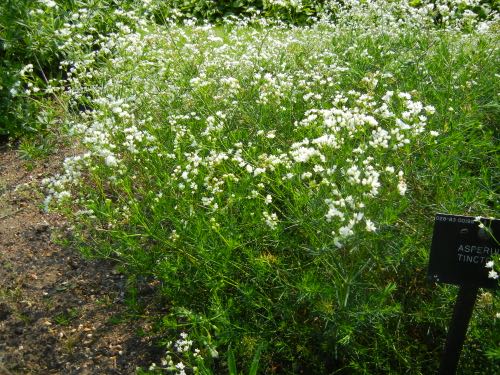The Rubiaceae family, also known as the Madder Family, Bedstraw Family, or Coffee Family, is a diverse plant family belonging to the order Gentianales. It encompasses a wide range of plants, including trees, shrubs, herbs, and lianas. With approximately 617 genera and around 13,548 species, the Rubiaceae family exhibits remarkable species diversity.
The distribution of Rubiaceae plants is diverse, although the majority of species are found in tropical and subtropical regions. Among the notable members of this family are some well-known and economically important plants. For example, the Coffee plant (Coffea) is a beloved beverage crop, while Cinchona trees provide the source of quinine, a medication used to treat malaria. Additionally, Gardenia and Penta are popular garden plants cherished for their beautiful flowers.
Typically, plants in the Rubiaceae family feature opposite leaves that are simple in structure. They also possess interpetiolar stipules, which are leaf-like structures that occur between the leaf bases on opposite sides of the stem.
The flowers of Rubiaceae plants are typically actinomorphic, meaning they can be divided into similar halves in any plane. The corollas, or petals, of these flowers are often radially symmetrical. Furthermore, Rubiaceae plants typically have inferior ovaries, which means that the ovary is positioned below the attachment point of the other floral parts.
The Rubiaceae family’s diversity, wide distribution, and economic significance make it a fascinating and important group of plants. From the beloved Coffee plant to the medicinal properties of Cinchona and the beauty of Gardenia and Penta, these plants have captured the attention and admiration of people around the world.
Subfamilies:
Cinchonoideae
Ixoroideae
Rubioideae
The genera in the Rubiaceae include: (A to C)
Acranthera
Acrobotrys
Acrosynanthus
Acunaeanthus
Adenorandia
Adina
Adinauclea
Afrocanthium
Agathisanthemum
Agouticarpa
Aidia
Aidiopsis
Airosperma
Alberta
Aleisanthia
Aleisanthiopsis
Alibertia
Alleizettella
Alseis
Amaioua
Amaracarpus
Amphiasma
Amphidasya
Anotis
Antherostele
Anthorrhiza
Anthospermopsis
Anthospermum
Antirhea
Aoranthe
Aphaenandra
Aphanocarpus
Apomuria
Arachnothryx
Arcytophyllum
Argocoffeopsis
Argostemma
Asemnantha
Asperula
Astiella
Atractocarpus
Atractogyne
Augusta
Aulacocalyx
B
Badusa
Balmea
Bathysa
Batopedina
Bellizinca
Belonophora
Benkara
Benzonia
Berghesia
Bertiera
Bikkia
Blepharidium
Bobea
Boholia
Borojoa
Bothriospora
Botryarrhena
Bouvardia
Brachytome
Bradea
Bremeria
Brenania
Breonadia
Breonia
Bruxanelia
Bullockia
Bungarimba
Burchellia
Burttdavya
Byrsophyllum
C
Callipeltis
Calochone
Calycophyllum
Calycosia
Calycosiphonia
Canephora
Canthium
Capirona
Carapichea
Carpacoce
Carphalea
Carterella
Casasia
Catesbaea
Catunaregam
Cephaelis
Cephalanthus
Ceratopyxis
Ceriscoides
Ceuthocarpus
Chaetostachydium
Chalepophyllum
Chamaepentas
Chapelieria
Chassalia
Chazaliella
Chimarrhis
Chiococca
Chione
Chomelia
Ciliosemina
Cinchona
Cinchonopsis
Cladoceras
Clarkella
Coccochondra
Coccocypselum
Coddia
Coelopyrena
Coelospermum
Coffea
Coleactina
Colleteria
Colletoecema
Condaminea
Conostomium
Coprosma
Coptophyllum
Coptosapelta
Coptosperma
Cordiera
Corynanthe
Coryphothamnus
Cosmibuena
Cosmocalyx
Coussarea
Coutaportla
Coutarea
Cowiea
Craterispermum
Cremaspora
Cremocarpon
Crobylanthe
Crocyllis
Crossopteryx
Crucianella
Cruciata
Cruckshanksia
Crusea
Csapodya
Cubanola
Cuviera
Cyanoneuron
Cyclophyllum


